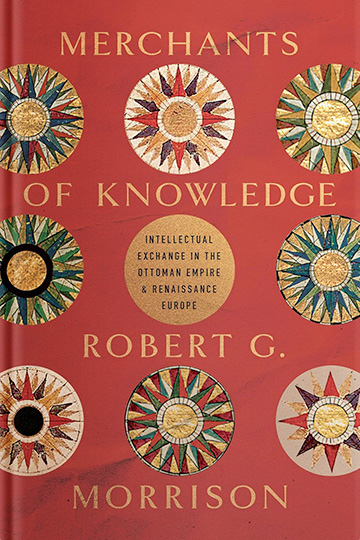Intellectual Exchange: How Transregional Jewish Scholars Contributed to the Renaissance
By Tom PorterWhen the European astronomer Nicholas Copernicus theorized in the early sixteenth century that the sun, rather than the earth, was at the center of the universe, it was a key moment in the Renaissance, said Robert Morrison.

However, a factor only being comparatively recently recognized by academics is the debt owed by Copernicus to earlier scholars in Islamic societies, explained Bowdoin’s George Lincoln Skolfield, Jr. Professor of Religion and Middle Eastern and North African Studies.
“Copernicus’s astronomy looks a lot like late medieval Islamic astronomy and people are asking ‘how did this happen?’ By what means did this scholarship makes its way to Western Europe?”
Morrison’s latest book, Merchants of Knowledge: Intellectual Exchange in the Ottomon Empire and Renaissance Europe (Stanford University Press, 2025), sheds new light on the cross-flow of ideas that developed across the Eastern Mediterranean between 1450 and 1550 and the people who made this possible.
While scholars like Copernicus undoubtedly learned from the Islamic world, this was a two-way street, stressed Morrison. Renaissance Europe depended on knowledge from the Ottoman Empire, but the courts of rulers like Mehmed the Conqueror and his son Bayezid II also greatly benefitted from ideas coming out of Europe

The result of fifteen years of research, Merchants of Knowledge tells the story of the multilingual and transregional Jewish scholars who acted as a conduit between the powers through their commercial and intellectual connections.
A key thing to remember about these “merchants of knowledge,” said Morrison, is that while they were scholars, they came from families who were also involved in commerce. These commercial links are described in the book as “the scaffolding of intellectual exchange.”
Furthermore, stressed Morrison, this exchange of knowledge was expansive and went beyond Copernicus and astronomy to cover fields such as philosophy, Qabbalah, astrology, medicine, and other branches of science. Furthermore, these merchants of knowledge, who were largely Romaniot Jews originating from the Byzantine Empire, belonged neither entirely to the eastern Ottoman culture nor to the western European tradition. “They had their own culture. It was kind of an intellectual hybrid of Jewish culture, Islamic culture, and medieval European culture. Many of them wrote in several languages, meaning they were in demand as intermediaries between the Christian world and the Muslim one.”
Through his painstaking research, which took him to libraries and archives across Europe and the Middle East, Morrison discovered there had been a distinct cluster of Jewish scholars on the Greek island of Crete (then called Candia), and that these scholars had a number of interactions with Venetian officials. This revelation sheds new light on the significant role that these merchants—who, being Jewish, were regarded as second class citizens—played in the history of the Renaissance. Crucially, Morrison said that he was also able to establish that this intellectual exchange started years earlier than previously thought.
Merchants of Knowledge is regarded by academics as an important contribution to the ongoing reassessment of the Renaissance. “Many scholars have argued that the Renaissance is not simply about the rediscovery of Greek antiquity and text—I mean that happens but it's not that simple,” explained Morrison. The Renaissance he portrays is a period of more diversity, more complexity, and more cultural cross-pollination than has been traditionally depicted—something which has major implications for how the West sees itself today.


